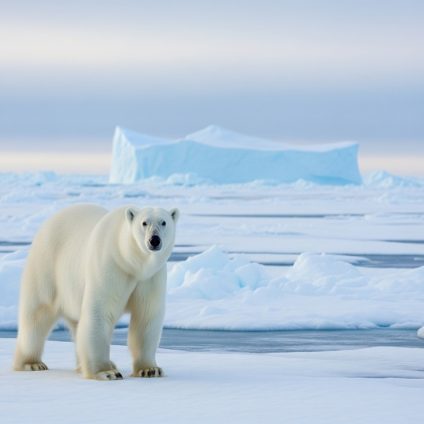Mercury released by human activities such as coal combustion and gold mining can stay in the atmosphere for up to a year. Once it enters the ocean, however, it remains there for 300 years.

By Erminia Voccia
Sea mercury pollution endangers Arctic animals and human health
Sea mercury pollution continues to rise in the Arctic, threatening both marine ecosystems and Indigenous populations, even as global mercury emissions decline. A new study published in Nature Communications by researchers at Aarhus University and the University of Copenhagen reveals that the levels of this toxic metal are climbing in the Earth’s northernmost region due to its long-lasting presence in ocean currents.
Mercury, a potent neurotoxin, can linger in the ocean for centuries after being emitted. “Mercury affects the immune system, reproductive capacity, and likely the sensory functions of animals, putting their survival at risk,” explained Christian Sonne of Aarhus University. Top Arctic predators such as polar bears and toothed whales now show mercury concentrations 20 to 30 times higher than pre-industrial levels. This poses not only an environmental issue but a direct threat to Indigenous communities that rely on marine mammals for their subsistence.
Ocean currents carry mercury long after emission
Mercury released by human activities, especially coal combustion and gold mining, can remain in the atmosphere for up to a year. But once it reaches the ocean, it can persist for over 300 years. This means that despite reductions in global emissions since the 1970s, the Arctic will continue to feel the toxic effects for generations.
“We have monitored mercury levels in Arctic animals for more than 40 years. While emissions have declined globally, we see no such decline in the Arctic, in fact, the opposite,” said professor Rune Dietz of Aarhus University.
The research team analyzed more than 700 samples of polar bears, seals, fish, and peat from Greenland collected over the past four decades. By examining the composition of six common isotopes, they identified regional differences linked to ocean current patterns. “Isotopes act like fingerprints, revealing the origin and pathway of toxic substances,” explained Jens Søndergaard, another researcher at Aarhus University.
Implications for global policy on mercury emissions
The findings have serious implications for the Minamata Convention, a global treaty aiming to reduce human-caused mercury emissions into air, water, and soil. Since sea mercury pollution can persist and travel for centuries, the study underscores the urgency of stronger long-term international enforcement.












